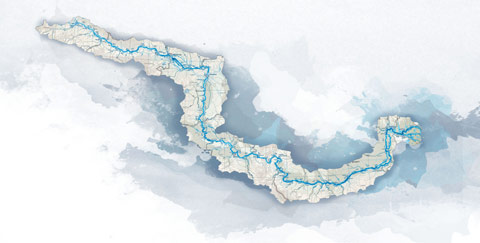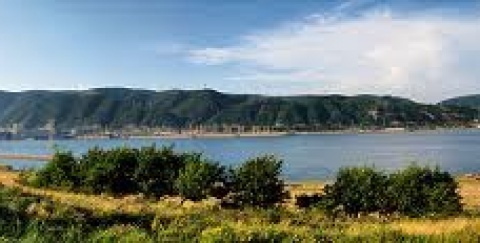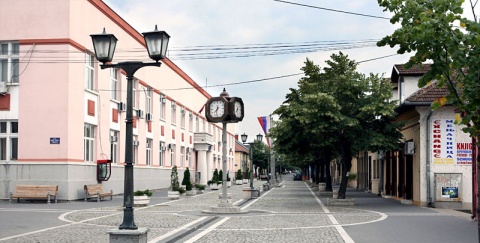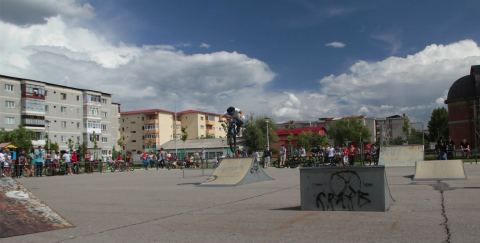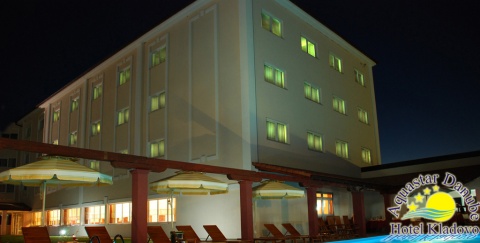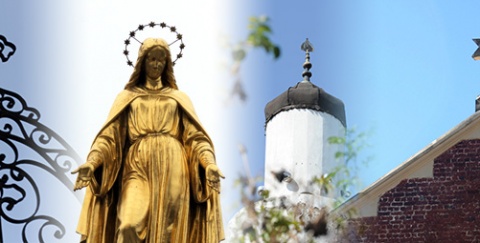

Along the Danube through History
Three day / two overnights tour by cruiser and by bus. National Park and Djerdap Gorge - Smederevo, Ram and Golubac Fortress - Traian's Table - Lepenski Vir - Viminacium - Kapetan Mišin Breg[br/] [br/] With field trip option to Hydroelectric Power Station Djerdap and Archeological Museum Kladovo ...
City: Donji Milanovac
Country: Serbia
Along the Danube through History
First day:
Cruising starts from Belgrade, while return is organised by bus. On the way to Djerdap tourists following points will be visited:
1. Belgrade is the capital and largest city of Serbia. It is located at the confluence of the Sava and Danube rivers, where the Pannonian Plain meets the Balkans. Its name translates to White
city. In antiquity, after 279 BC Celts founded the city, naming it Singidūn . It was conquered by the Romans during the reign of Augustus. Belgrade is official capital of Serbia.
2. Vinča-Belo Brdo is an archaeological site in Vinča, a suburb of Belgrade. The tell of Belo Brdo ('White Hill') is almost entirely made up of the remains of human settlement, and was occupied several times from the Early Neolithic (c. 5700 BCE) through to the Medieval period. The earliest deposits at Belo Brdo belong to the Early Neolithic Starčevo culture.
3. Smederevo is a city in north-east Serbia, on the right bank of the Danube. The modern founder of the city was the Serbian prince Đurađ Branković in the 15th century, who built Smederevo Fortress in 1430 as the new Serbian capital and the largest lowland fortress in Europe. Today, Smederevo is a large industrial center.
4. Viminacium (VIMINACIVM) was a major city and military camp of the Roman province of Moesia (today's Serbia), and the capital of Moesia Superior. The site is located near modern town of Kostolac in Eastern Serbia. The city dates back to the 1st century AD, and at its peak it is believed to have had more than 45,000 inhabitants. Viminacium was the base camp of Legio VII Claudia, and hosted for some time the IV Flavia Felix. It was completely destroyed with the arrival of Slavs in the 6th century.
5. Ram Fortress is situated on a steep slope on the right bank of the River Danube, in the municipality of Veliko Gradište. Situated on a rock which is from the northeast side tilted towards the Danube River. It is assumed that the city was built on a opposite side of fortress of Haram, from which nothing was left today, and which is located on the other side of the Danube. The earliest record of Ram Fortress dates back to 12 Century.
6. Golubac Fortress was a medieval fortified town on the south side of the Danube River, 4 km downstream from the modern-day town of Golubac, Serbia. It is situated on high cliffs, the place where the river narrows at the entrance to the Iron Gate. The fortress, was most likely built during the 14th century.
7. The Djerdap National Park stretches along the right bank of the Danube River from the Golubac fortress to the Karatas near Kladovo. The main feature and attraction of the Đerdap
National Park's natural beauty is the Djerdap gorge - the famous Iron Gate - the grandiose gateway through the southern slopes of the Carpathian mountains. In Gospođin vir, one of the greatest river depths in the world has been measured (82 m).
8. Lepenski Vir is an important Mesolithic and Neolithic archaeological site located on the banks of the Danube in eastern Serbia, within the Iron Gates gorge. It consists of one large settlement with around ten satellite villages. This site, which was named after the Danube whirl, was the seat of one of the most important and complex prehistoric culture. Between 1965 and 1970 it was discovered fishing hunting village with the beginnings of cultivation and domestication.
9. The Kazan Gorge is the most famous and the most narrow gorge of the whole Danube: the river here, in The Great kazan, narrows to 140 m and reaches a depth of up to 70 m. The Little Kazan narrows up to 180 m. The riverbed of the Danube River in this part of the Djerdapska gorge is the narrowest.
10. Current Mrakonia Monastery was built in 1993 near where there was an old Orthodox Monastery Mrakonia from 1523 to 1787. The existence of the monastery evidenced by the inscription that was found in 1823 in the ruins of the same: "Peceat Manastirea Lubostinie Hram Uspenia Presvistaia Bogaraditi Leto 1735."
11. The rock sculpture of Decebalus is a 40-m high carving in rock of the face of Decebalus, the last king of Dacia. The sculpture is on a rocky outcrop on the river Danube, at the Iron Gates. It is the tallest rock sculpture in Europe. It took 10 years, from 1994 to 2004, for twelve sculptors to finish it. Under the face of Decebalus there is a Latin inscription which reads "DECEBALUS REX—DRAGAN FECIT" ("King Decebalus—Made by Drăgan").
12. Tabula Traiana is a Roman memorial plaque, 4 meters wide and 1.75 metres high, commemorating the completion of Trajan's military road. It is located in National park Djerdap, in 1972, when the Iron Gate I Hydroelectric Power Station was built, the plaque was moved from its original location, and lifted 21,5 m higher to its present place.
Second day excursion:
Archaeological Museum, Traian's Bridge, Winery “Danube soul”, Roman Diana, HP Djerdap, Tekija
In order to get closer to the Danube and its undiscovered treasures, to discover the secrets that still lie at the bottom of the river, on the second day we’ll visit the Archaeological Museum of the Iron Gate in the center of Kladovo. Visiting museums is an important testimony about diversity of the cultures in prehistoric, Roman and medieval periods on the Danube. After museum, we will visit the remains of Traian's bridge, along the fortress, kastrum Pontes. Almost 1,000 years after the construction, bridge was considered to be the largest in the world. It was built during the reign of the Roman Emperor Traian at the beginning of the
second century, in order to cross the Danube and conquer Dacian tribes.
Right after the bridge, we will arrive at the winery in village Kostol, where we will taste the famous wines from this region, "Soul of the Danube" and "Soul of the Balkans". The journey continues with a
short tour of the Roman fortress Diana. Later on, lunch will be served at a fish restaurant in small village Tekija. The journey continues with visit of hydroelectric plant “Djerdap”. Built in 1974 as the largest project of the year in Europe, whose construction has significantly altered the position of the Danube, the local villages as well as cultural and historical monuments which are located nearby.
Third day - return journey:
Lepenski Vir - Captain Misha’s Hill - Golubac - Viminacium - Smederevo fortress
Leaving Kladovo in 9 AM. We’ll have around 1,5 hour driving along the Danube, trough the Iron Gate, straight to Donji Milanovac and archeological site Lepenski vir. After a brief tour on the site 9000 years old, we’ll have a lunch in the ethnic restaurant "Captain Misha's Hill", which offers a beautiful view of the Danube and the environment.
Eco - ethno complex, "Captain Misha’s Hill" is located near Donji Milanovac, in the heart of the Iron gate and on the central spot of the national park. "Captain Misha’s Hill" exists for 10 years already, with a gallery of wooden sculptures containing about 400 sculptures. So far, the hill has already visited more than 20 000 visitors. Especially for our guests, family Stefanovic has prepared delicious dishes Vlach cuisine with ethno atmosphere to remember.
The journey continues with an amazing Golubac fort. After a short drive, we’ll visit Viminacium, Roman city from I century, and for the end of the journey, coming to Smederevo and visiting another fortress on the Danube.
Programe of the tour available for printing (Serbian / English)
Contact and more info:
Hotel Aquastar Danube Kladovo
Phone: 00381 19 810 810
Cruiser Aquastar Maxim
Phone: 00381 64 610 83 73
www.dunavomkrozistoriju.com
www:krstarenjedunavom.rs
DANUBE.TRAVEL has no control over the website content generated by users and/or visitors, neither such content represents a statement, opinion, recommendation or rating by DANUBE.TRAVEL. For further information please refer to DANUBE.TRAVEL – General Website Terms and Conditions of Use.
 EN
EN DE
DE
